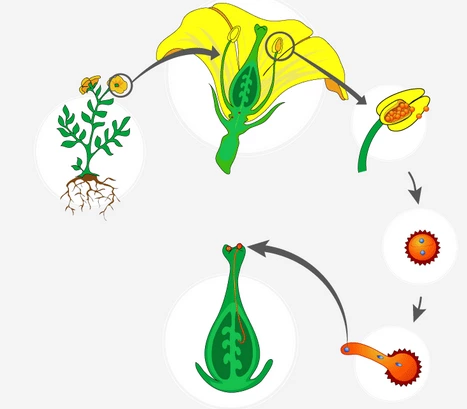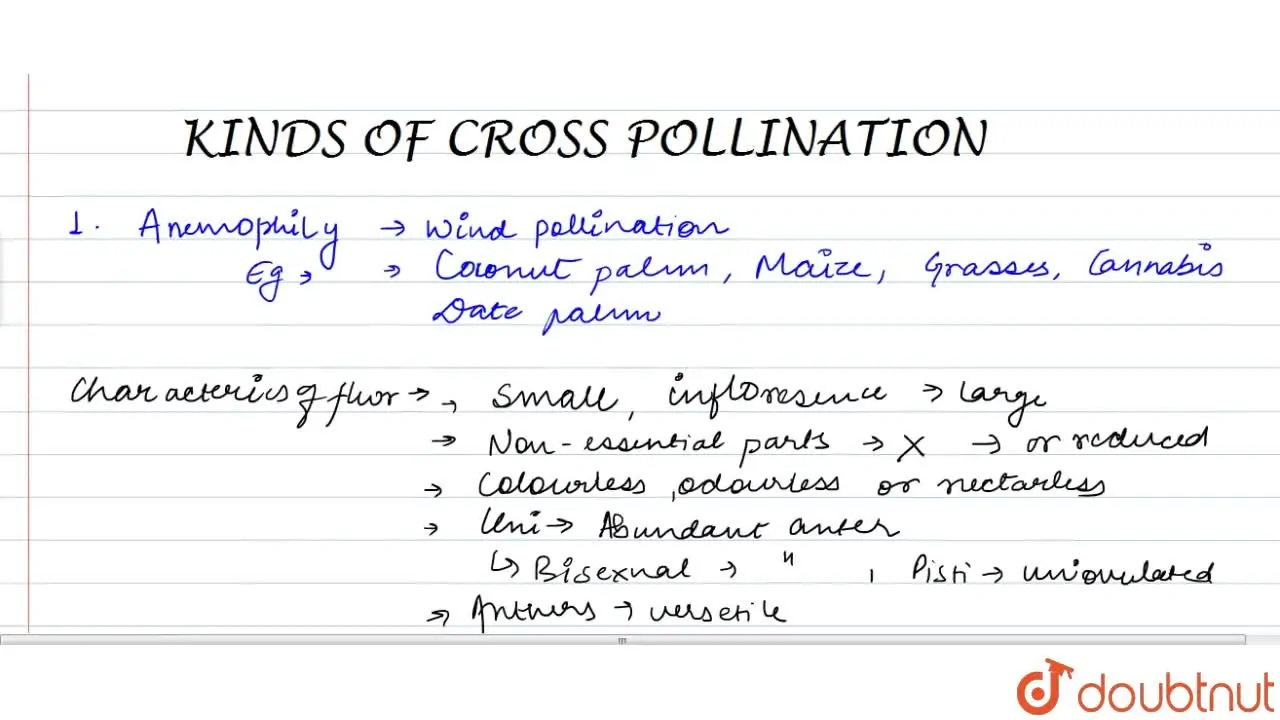Kinds And Agents Of Pollination
Kinds and Agents of Pollination
Do you notice that honey bees are attracted to the flowers? Flowers look beautiful and smell good however you should know the reason behind it – flowers help plants to reproduce. Flowering plants have seeds, convey the genetic data of the parents, and form into another plant.

What is Pollination?
Pollination happens to be a process where pollen grains are picked from an anther, which is the male flower, and moved to the flowers female part called the stigma. To make the pollination work effectively, the pollen grains must be moved from similar species of flowers.
What is the process of pollination?
Coming to the process of pollination, it starts when the pollen grains from the individual flowers arrives on the stigma and structure a pollen tube with the style length, which interfaces both the stigma and ovary. After the pollen tube is completed, the pollen grain begins transmitting sperm cells from the grain to the ovary.
Later the procedure of fertilization in plants will happen when the sperm cells arrive at the ovary and egg cells. The seed is then discharged from the parent plant and making it ready to develop into a plant and proceed with the regenerative cycle with the utilization of the pollination method.
Types of Pollination
Two types of pollination are there: Self Pollination and Cross-Pollination.
Self Pollination
This is a primary form of pollination because of the reason that it includes a single flower. Self-pollination happens when pollen grains fall from anther into the stigma of the flower. Despite this procedure is very basic and quick, it prompts a decrease in genetic assorted variety as the sperm and egg cells of the flower share some genetic information.
What are the Advantages and Disadvantages of Self-pollination
- Self-pollination guarantees that latent characters are wiped out.
- The wastage of the pollen grain is less contrasted when it comes to comparing with cross- pollination
- During the process of self- pollination, the purity of the race is kept up, as there is no assorted variety in the qualities
- In self- pollination, there is no inclusion of outside variables like wind, water, and other pollinating operators.
- Self- pollination guarantees that even a little amount of delivered pollen grains from plants have a decent success rate in pollination.
Disadvantages
The most important disadvantage of self- pollination is the absence of mixing up of genes for which:
- The vitality and vigour of the species seem to be reduced
- The resistance to infections is reduced in the resultant offsprings.
Related Videos:
Cross-Pollination
It refers to a complex type of pollination that helps in allowing the transfer of pollen grains that begins from the anther of the flower into the stigma of another flower. This method helps in leading to genetic diversity increase as different flowers will share and combine their genetic information to create unique offspring.
Types of Cross-Pollination
The procedure of cross-pollination needs a good amount of help of biotic and abiotic agents like wind, insects, birds, animals and so on.
Pollination by Wind- Anemophily
Few flowers make use of wind pollination and their features are greenish, odourless and small flowers. As these flowers don't attract in the pollinators, their vitality isn't utilized for making brilliant petals. The male parts of the Anemophilous flowers will, in general produce exceptionally huge amounts of stigma and pollen. On the other hand, the female reproductive parts are quite feathery, sticky and large. We can take some of the examples of wind-pollinated plants like grasses, palm, coconut, etc.
You probably observed that your colour is completely shrouded with yellow film in the spring. Well, it is the pollen that makes use of the wind in the process of pollination.
Pollination by Animals – Zoophily
Animals play a very important role when it comes to plant reproduction. They help in seed dispersal. At the point when an animal eats the product of a plant, they move to a different area. The movement that they make helps to spread the seeds, and with this, we get new plants to new areas.
Artificial Pollination – Anthropophily
Human beings do artificial pollination. This procedure is additionally called as the Anthropophily. If there is any problem in the process of pollination through abiotic or biotic agents, the artificial method of pollination is performed where pollen grains are spread over the female flowers. Hybridization techniques are also utilized in this procedure.
Advantages and Disadvantages of Cross-pollination
Advantages
- The produced seeds are good in vitality and vigour.
- The recessive characters in the heredity are dispensed with because of genetic recombination.
- Every unisexual plant can reproduce with the help of the cross-pollination process.
- This procedure improves the resistance of the offsprings towards different diseases.
- Cross-pollination brings new qualities into an arrangement of animal categories, and this is for mainly because of the fertilization between different gametes.
Disadvantages
- In this process, there is an enormous wastage of pollen grains.
- Because of genetic recombination during meiosis, there are higher chances to get rid of unwanted characteristics in offspring.
Important Chapters:

Similar Questions
Pollination is
View SolutionPollination is
View SolutionPollination | | Types OF pollination | | Adaptation for self and cross pollination | | Agents OF pollination
View SolutionDefine pollination. Explain the different types of pollination. List two agents of pollination. How does suitable pollination lead to fertilization?
View SolutionDefine pollination. Enlist agents for pollination.
View SolutionWhat is pollination ? Differentiate between self pollination and cross pollination name some agents of pollination
View SolutionList the possible external agents of pollination.
View SolutionRead the following statements and find out the incorrect statements.
a. Plants use two abiotic (wind and water) and one biotic (animals) agent to achieve pollination.
b. Majority of plants use abiotic agents for pollination.
c. Only a small proportion of plants uses biotic agents.
d. Pollination by water is common among abiotic polinators.
e. Pollination by wind is quite rare in flowering plants and is restricted to about 30 genera mostly monocotyledons.View SolutionAssertion :- Geitonogamy is functionaly cross pollination and genetically self pollination.
Reason :- It involves pollinating agent but pollen grains come from same plantView SolutionGive an account of any two biotic agents for pollination along with their adaptations.
View Solution


